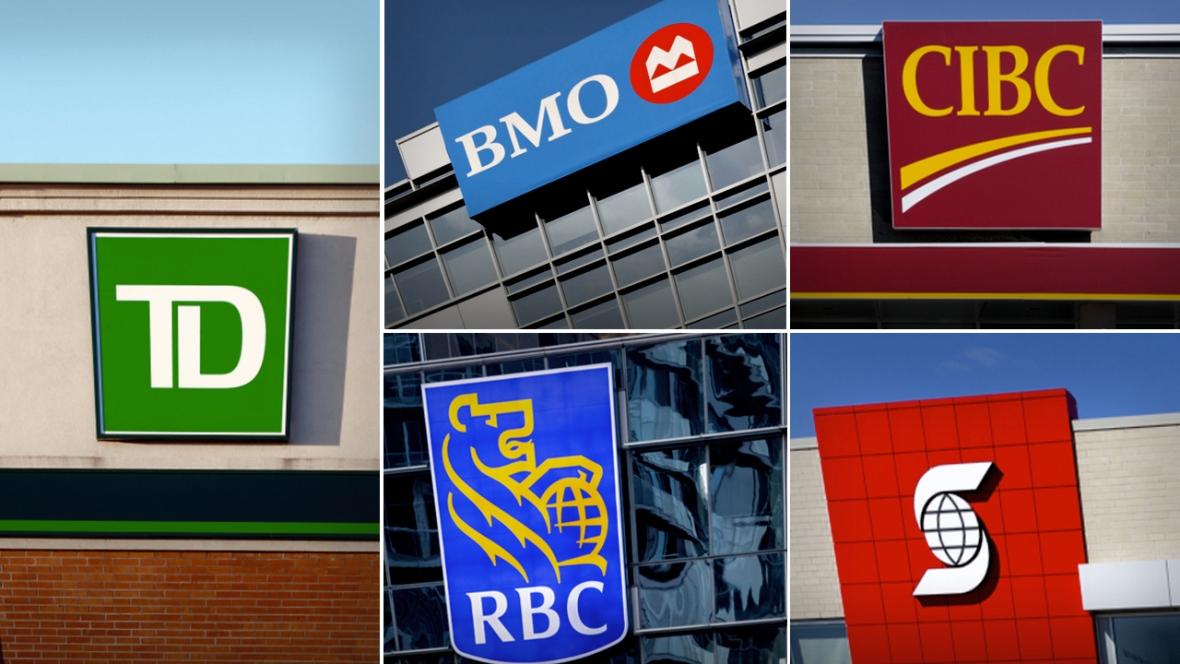One of the first big steps you will take as a newcomer to Canada is opening a bank account. It may not feel as exciting as renting your first apartment or landing a job, but the bank you choose will shape your everyday finances and long-term stability.
Many newcomers arrive with no Canadian credit history, little understanding of local fee structures, and sometimes extra hurdles just to open a basic account. This is why banks created newcomer packages, special programs designed to make settling in easier.
In this article, we will look at what the Big 5 banks in Canada, RBC, TD, Scotiabank, BMO, and CIBC, are offering newcomers. You will find a breakdown of fees, benefits, credit-building opportunities, and unique perks to help you choose the bank that best supports your financial journey in Canada.
Why Newcomer Packages Matter
- No Canadian credit history requirements
- Reduced or waived fees for a period
- Useful perks like high credit limits, help with international transfers, or settlement services
- Language support or customer service in multiple languages
These features can make a big difference your first year, when things are still new and uncertain.
Overview of the Big 5 Banks in Canada
Canada’s banking sector is dominated by five major institutions, collectively known as the Big Five: Bank of Montreal (BMO), Scotiabank, Canadian Imperial Bank of Commerce (CIBC), Royal Bank of Canada (RBC), and Toronto-Dominion Bank (TD). Each has developed newcomer-specific programs, though their approaches and strengths vary significantly.
Royal Bank of Canada (RBC): As Canada’s largest bank by market capitalization, RBC offers extensive branch networks and comprehensive newcomer support. Their international presence makes them particularly appealing to newcomers from countries where RBC operates. The bank emphasizes premium service and comprehensive financial planning.
Toronto-Dominion Bank (TD): TD has built a reputation for customer service and digital banking innovation. Their newcomer programs focus on simplicity and accessibility, with strong online and mobile banking platforms. TD has significant operations in the United States, beneficial for newcomers with cross-border financial needs.
Bank of Nova Scotia (Scotiabank): Scotiabank’s strength lies in international connections, particularly with Latin America and the Caribbean. Their global network makes them attractive for newcomers from these regions. They position themselves as “Canada’s most international bank” and leverage this expertise in their newcomer services.
Bank of Montreal (BMO): BMO markets itself as “the bank that gets you” and emphasizes personalized service. Their newcomer programs focus on building long-term relationships and providing educational resources to help newcomers understand Canadian financial systems.
Canadian Imperial Bank of Commerce (CIBC): CIBC differentiates itself through digital innovation and streamlined processes. Their newcomer packages often feature longer promotional periods and simplified account opening procedures, appealing to newcomers who want efficiency.
Comparison Table: Newcomer Banking Packages

| Bank | Package Name | Free Banking Period | Credit Card Offer | Key Perks |
| RBC | Newcomer Advantage | 12 months | Up to $15,000 limit with no Canadian credit history required | Free safety deposit box, service in many languages, large branch/ATM network, mobile banking; settlement support |
| TD | New to Canada Banking | 12 months | Cash back/rewards | No minimum balance, unlimited transactions, multilingual support, savings bonuses |
| Scotiabank | StartRight Program | 12 months | Unlimited no-fee international transfers, Rewards visa | Global money transfer network, settlement support, no credit history required |
| BMO | NewStart Program | 12 months | Cash back or Rewards Mastercard | Free financial planning session, unlimited transactions, dedicated newcomer advisors |
| CIBC | Welcome to Canada | 24 months | Cash back/rewards | Longest free period, unlimited transactions, Skip+ rewards partnership |
Deep Dive into Each Bank’s Newcomer Package
RBC – Newcomer Advantage
RBC offers “no-monthly-fee banking for a year” on certain chequing accounts for newcomers. You may also qualify for a high-limit credit card (up to $15,000) even if you don’t have Canadian credit history. They support many languages in branches and by phone, which helps when you’re still getting used to the financial environment.
TD – New to Canada Banking Package
With TD, you get up to $1,930 in value, including fee waivers, ATM fee refunds, free transactions, and bonuses. You can open the TD Unlimited Chequing Account with no fee for a year. The newcomer package also includes savings account offers and credit card rewards (with options that waive annual fees in the first year).
Scotiabank– StartRight Program
Scotiabank offers 12 months of free banking with unlimited transactions, plus access to the No Fee Rewards Visa card, which does not require Canadian credit history. A major advantage is Scotiabank’s global reach, with operations in over 50 countries that allow for better exchange rates and lower transfer fees. The program has earned recognition as the best banking offer for newcomers due to its comprehensive mix of benefits.
BMO– NewStart Program
BMO provides 12 months of free banking on select accounts, followed by a $16.95 monthly fee unless minimum balances are kept. Its standout feature is personalized financial planning, with advisors trained to support newcomers on credit building, saving, and long-term goals like homeownership. BMO also offers reduced fees on international transfers and collaborates with immigrant-serving organizations to provide settlement support and financial education resources.
CIBC – Smart Account for Newcomers
CIBC gives 24 months with no monthly chequing fees. There’s sometimes a $500 cash bonus when you open the account and complete qualifying actions. Their newcomer program also includes helpful resources and allows easy pairing with a credit card.
Key Factors to Consider When Choosing a Bank
When you compare all the newcomer offers, think about what matters most to you:
- How long the fee waiver lasts, and what happens after that
- Whether credit cards are available with no credit history and their interest / rewards
- ATM and branch accessibility where you live
- International money transfer costs and support
- Language support, settlement advice, and newcomer resources
- Hidden fees (for example, fees for Interac e-transfers, overdraft, ATM outside network)
Tips for Opening a Bank Account as a Newcomer
- Bring required documents: passport, immigration papers or study/work permit, proof of address. RBC requires proof of your newcomer status.
- Compare what’s offered after the free period ends, monthly fees can jump.
- Choose a bank with a branch or ATM close by to avoid extra ATM fees
- Start building credit early by using a credit card responsibly
- Ask about offers you might qualify for before arriving (some banks let you initiate setup from abroad)

Final Thoughts on Best Banks for Newcomers in Canada
Choosing the best bank for your needs as a newcomer depends on your specific priorities and circumstances. There’s no universal “best” option—a bank that excels for someone sending regular money transfers to family abroad might not be ideal for someone focused purely on building credit and saving on fees.
Take time to compare offers carefully, considering both immediate benefits and long-term costs. Don’t hesitate to visit multiple banks to ask questions and get a feel for their customer service approach. The relationship you build with your first Canadian bank can influence your financial success for years to come.
Frequently Asked Questions
1. Which bank is best for newcomers in Canada?
There’s no single “best” bank for all newcomers, as the ideal choice depends on your specific needs. CIBC offers the longest free banking period (24 months), Scotiabank excels at international transfers, TD provides strong digital banking, BMO focuses on personalized service and credit building, while RBC offers comprehensive settlement support. Compare based on your priorities: international transfers, credit building, digital banking preferences, or long-term fee structure.
2. Can newcomers in Canada get a credit card without credit history?
Yes, all major Canadian banks offer credit cards specifically designed for newcomers without Canadian credit history. These typically include secured credit cards (requiring a deposit) or special approval processes for unsecured cards with lower initial limits ($500-$2,000). Banks use alternative criteria like employment status, income, and immigration status to assess eligibility.
3. How much money do you need to open a bank account in Canada?
Most newcomer banking packages don’t require minimum opening deposits, though some premium accounts may require $100-$10,000 initial deposits. However, you’ll want sufficient funds to cover your initial living expenses and demonstrate financial stability. Many banks recommend having at least $1,000-$3,000 available when opening accounts to avoid low balance fees and establish positive banking relationships.
4. Which Canadian bank is best for international students?
TD Bank typically ranks highest for international students due to their specific International Student Banking package, strong digital platform, and cross-border expertise. However, Scotiabank’s global network can be valuable for students from countries where Scotiabank operates, while CIBC’s 24-month free banking period provides significant cost savings during typically cash-strapped student years.
5. Are there hidden fees in newcomer bank accounts?
While newcomer packages offer transparent fee waivers during promotional periods, watch for fees that may still apply: international wire transfer fees (unless specifically waived), foreign exchange margins on currency conversions, overdraft fees, and fees for services like certified cheques or stop payments. Always request a complete fee schedule and understand what happens when promotional periods end.












